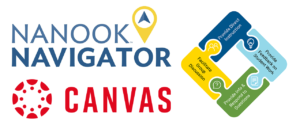Why should we care about OER?
Open education is an idea, practice, community and a set of content and policy. Since the rise of the Internet and related technologies, educators worldwide can easily create and share high-quality, effective online learning materials with everyone who wants to learn for near-zero cost. One can argue that educators and governments who support public education have an obligation to provide greater affordable access.1 This idea stems from the premise that education is fundamentally about the open sharing of knowledge and ideas. In practice, open education is often about focusing on personalized learning experiences for students where the assessment activities are meaningful and connect with the broader community.
We can foster open education principles through providing open access to materials, reducing the number of disposable assignments, engaging real-world connections, providing public performance opportunities, ensuring safe and nurturing spaces for student contribution and encouraging sharing back to the broader community of knowledge.
Open education is also rooted in the use of OERs, so it might be helpful to address what these are. Open Educational Resources:
- are teaching, learning or research materials
- are free and mostly online (but non-digital can be OER too)
- legally allow for use without asking special permission
- permission for use allows us to: retain, reuse, revise, remix and redistribute materials
- are openly licensed or part of the public domain
- can be almost anything – textbooks, video, audio, images, simulations, a whole course or an entire program
You can learn more about how to find and share OER on the UAF resource for open education.
Why should we care about OER?
Access to affordable education is more important than ever right now. Still, expensive print textbooks and complicated ebook subscriptions remain a barrier to college affordability, student success and retention. In the U.S., the average annual cost of textbooks and materials for students at four-year public institutions is around $1,200. Several extensive studies have discovered that at least 65% of students sometimes skip purchasing textbooks due to cost.2 These studies also show that underrepresented students are often affected the most.3 Students who cannot purchase materials have lower success rates and find it challenging to keep up even if they eventually get the textbook. This can lead to higher withdrawal rates as well.4,5 Student advisors at CTL agree that this is a significant problem at UAF as well.
When publishers bundle a textbook with an access code, it eliminates most opportunities for students to cut expenses by purchasing a used book or renting. In one study, around 21% of students reported not purchasing access codes, which puts these students at a disadvantage for additional learning features provided by publishers.6 Removing these required access codes — just requiring the textbook — can help reduce costs and open up options for students. Access codes often expire at the end of the semester and are not something that the student can resell. Students also lose access to that content after the semester, limiting references for additional courses that build on that content.
Finally, you have more flexibility to customize your materials by choosing OER because you are not locked into one expensive textbook.
NoLo is a term used to describe and tag in UAF Banner our classes with no or low-cost textbooks and materials under $40 (excluding lab and studio course fees). While NoLo courses are not necessarily OER courses, they often use a mix of OER and other free resources.
How can I get started transforming my course to OER or NoLo?
Searching in the largest OER repositories for your discipline is a good place to start. You will want to carefully consider your search keywords, published date range, and grade level range to get the best results. Network with colleagues about open resources they might know of and recommend. Also, the instructional designers at CTL and librarians at Rasmuson Library can help you search for OER to use in your course.
Some questions to consider when evaluating any course material: Does the material adequately support, reflect and include my students’ diverse backgrounds and cultures? Is the material accessible for all abilities? Is the material openly available for the whole cohort at the same time or are licenses limited (e.g. some library resources)? Can you provide the material in a way that is responsive to a wide range of devices?
You may also want to consider creating your own OER to share using a Creative Commons License.
How do I let students know about my OER course?
Let your students know that you will be using OER materials in the syllabus and in your welcome to class section of your course. Explain why you are using open resources and the considerations you made when choosing them. They may appreciate knowing that you have taken their finances into consideration. They may also have good feedback for you on the materials you’ve chosen during mid-course and end-of-course surveys.
Is your course NoLo? Let the registrar know to tag your course in the schedule or fill out this form.
References
1Open Education. U.S. Department of Education, . June 9, 2021. U.S. Department of Education.
2,6Nagle, C. and K. Vitez. Fixing the broken textbook market. February 2021. Report. U.S. PIRG Education Fund
3Jenkins, JJ, et al. 2020. Textbook Broke: Textbook Affordability as a Social Justice Issue. Journal of Interactive Media in Education, 2020(1): 3, pp. 1–13. DOI: https://doi.org/10.5334/jime.549
4McKenzie, L. Study: High Textbook Prices Lead to Poor Grades. Inside Higher Ed. September 17, 2017. Retrieved from source.
5Clinton, V., S. Khan. 2019. Efficacy of Open Textbook Adoption on Learning Performance and Course Withdrawal Rates: A Meta-Analysis. AERA Open, 2019(5): 3, pp. 1–20. DOI: https://doi.org/10.1177/2332858419872212
Further Reading
Awareness of OER grows (during pandemic) but adoption doesn’t – Inside Higher Ed, March 18, 2021
Open Pedagogy by Robin DeRosa and Rajiv Jhangiani of Open Pedagogy Notebook – a great overview of how OER fit within the larger umbrella of open pedagogy practice
Marking Open and Affordable Courses: Practices and Case Studies, Mavs Open Press, UTA Libraries – Chapter 1, ‘State and Federal Legislation’
Undergraduate Student Perspectives on Textbook Costs and Implications for Academic Success. – Case study at Old Dominion University




